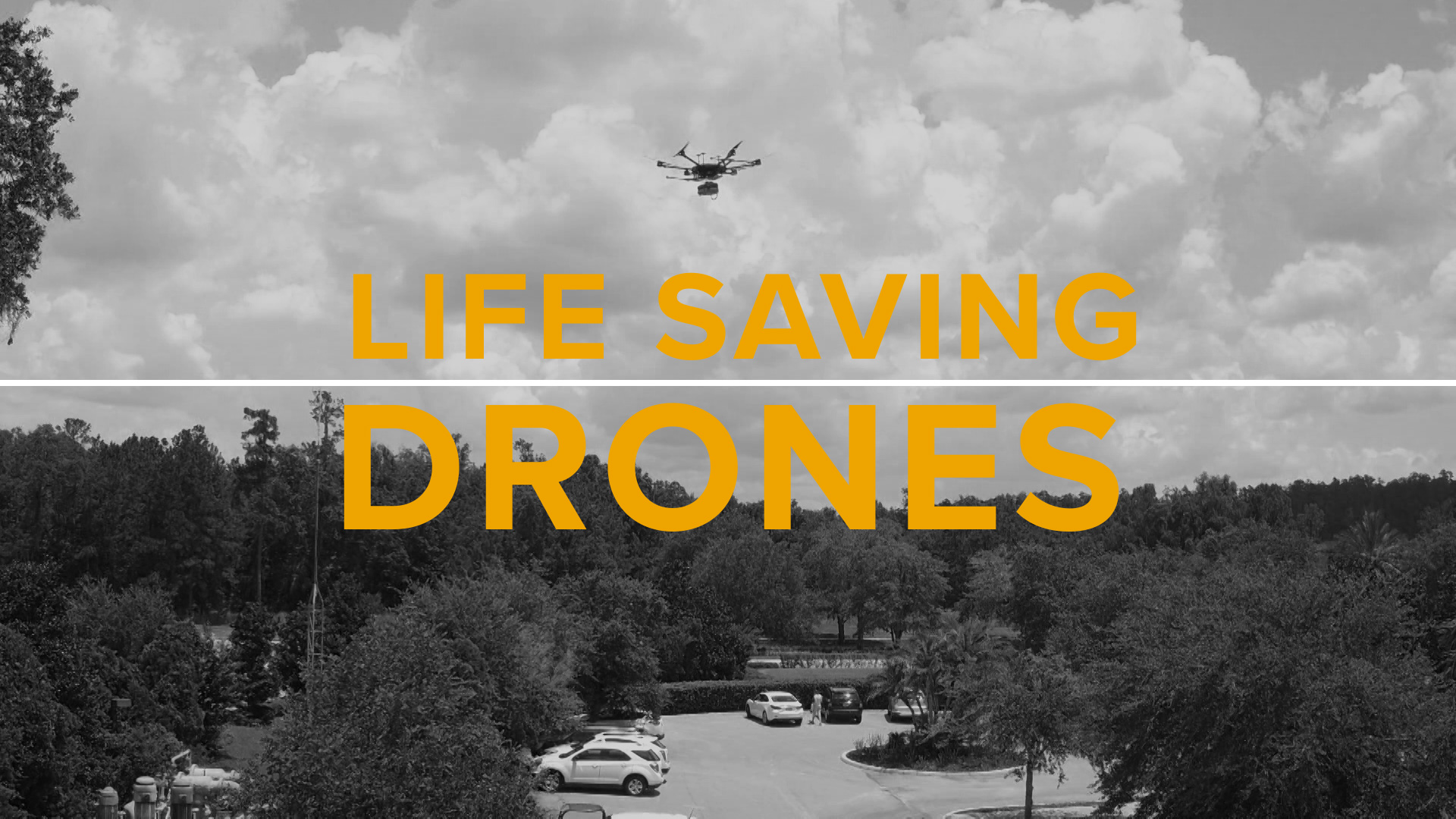We've seen companies test drones to deliver packages and even restaurant chains test out drone delivery service. But now, drones are being tested and used to get medical equipment to those in need during a cardiac emergency.
"They don't have to worry about running to find a defibrillator. They don't have to think about should I stay and do CPR or run. There's no decision making process. It stays there. Perform effective CPR and wait," explained Gordon Folkes, Chief Executive Officer of Archer First Response Systems.
Folkes and Kade Aley first started working on the idea to attach drones to AEDs in 2013 when they were students at Florida State.
"We're not trying to be a robotics company. We're trying to be a service company to provide first response service to master planned community,” said Folkes.
If someone goes into cardiac arrest, another person can use the Archer First Response Systems app to call 911. At the same time, a defibrillator is dispatched.
Within seconds, the drone leaves its home base, and using GPS technology, goes to a nearby, pre-programmed drop point. Once a drone drops the AED, the person on the ground can begin administering potentially life-saving treatment.
At the same time, the drone hovers over the emergency, giving first responders an added visual of where they have to go. The drone can hover for eight to ten minutes, while the person who called for help is walked through how to use the AED or perform CPR. The drones then lands in a safe area.
"The AED brings the circulation back. When they come to us they have a living human being we can work on. So, we have a more viable human being which we can save,” explained Doctor Siva Kumar, a cardiologist at Tampa General Hospital. "So, if you're able to regain blood flow in less than four minutes to the brain, the brain can come back to normal. It's very, very important in the first few minutes when the patient passes out."
When every second counts, getting an AED there faster is key. The average response time in this area in Brooksville, Florida is anywhere from three minutes and thirty seconds, to three minutes and forty-five seconds.
Folkes says his company's response system could cover this entire housing development with a response time under two minutes. For Folkes, it’s about working with first responders and providing what he refers to as blanket AED coverage.
"It's being able to know that no matter where you are at that you have a defibrillator within 10 feet of you in under three minutes. It’s a peace of mind that we really think it's going to really help save lives," said Folkes.
Folkes tells 10News his company installed its first drone delivery system at a housing development in St. Augustine back in May. They have other installs scheduled for this fall in Florida, including in the Tampa Bay area.
►Make it easy to keep up-to-date with more stories like this. Download the 10 News app now.
Have a news tip? Email tips@wtsp.com, visit our Facebook page or Twitter feed.


